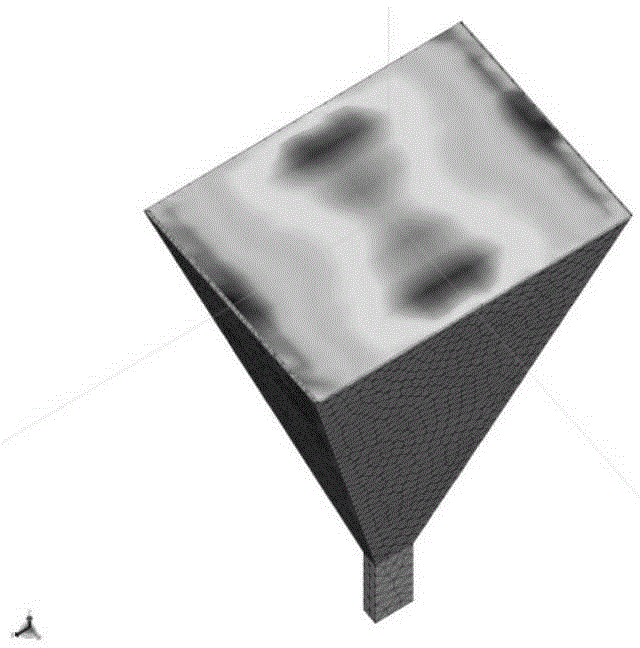Method of measuring influence of radome on antenna array direction-finding performance
A technology of antenna array and radome, which is applied to direction finders for measuring directions, direction finders using radio waves, monitoring/testing of radio wave directional devices, etc. Test complex workload and other issues to achieve the effect of reducing complexity and workload, small workload, and simple process
- Summary
- Abstract
- Description
- Claims
- Application Information
AI Technical Summary
Problems solved by technology
Method used
Image
Examples
Embodiment 1
[0097] Embodiment 1: In this embodiment, a certain antenna array-radome system is taken as an example to describe the method in detail, and the position of the antenna array is shown in Table 2. In this embodiment, the working frequency band of the system is 2-18 GHz, and the five-element antenna array is inside the radome to form an interferometer direction finding system, and the direction finding is realized by using the principle of long and short baselines. The schematic diagram of the antenna array in this example is as follows Figure 7 As shown, if the center of the radome is taken as the origin of the coordinates, the coordinates of each antenna are defined according to Table 2, and the antenna unit selects a uniform surface. In the present embodiment, the radome uses a tangent oval shape, its length L=1000mm, and its diameter is D 0 =800mm, the schematic diagram is as follows Figure 8As shown, the radome model is established using the modeling software CATIA, as s...
Embodiment 2
[0101] Embodiment 2: In this embodiment, the method is described in detail by taking a quadruple antenna array-radome system operating in the frequency band of 0.8-6 GHz as an example. Inside the radome is a four-element antenna array, which constitutes an interferometer direction finding system. The schematic diagram of the antenna array in this example is as follows Figure 10 As shown, the lengths of the respective baselines are L1=188mm, L2=144mm, and L3=239mm, and the antenna unit selects a uniform mouth surface. The radome uses a square plate structure radome with a side length of 1000mm. The relative permittivity and thickness of each layer of the radome wall are shown in Table 1.
PUM
 Login to View More
Login to View More Abstract
Description
Claims
Application Information
 Login to View More
Login to View More - R&D
- Intellectual Property
- Life Sciences
- Materials
- Tech Scout
- Unparalleled Data Quality
- Higher Quality Content
- 60% Fewer Hallucinations
Browse by: Latest US Patents, China's latest patents, Technical Efficacy Thesaurus, Application Domain, Technology Topic, Popular Technical Reports.
© 2025 PatSnap. All rights reserved.Legal|Privacy policy|Modern Slavery Act Transparency Statement|Sitemap|About US| Contact US: help@patsnap.com



